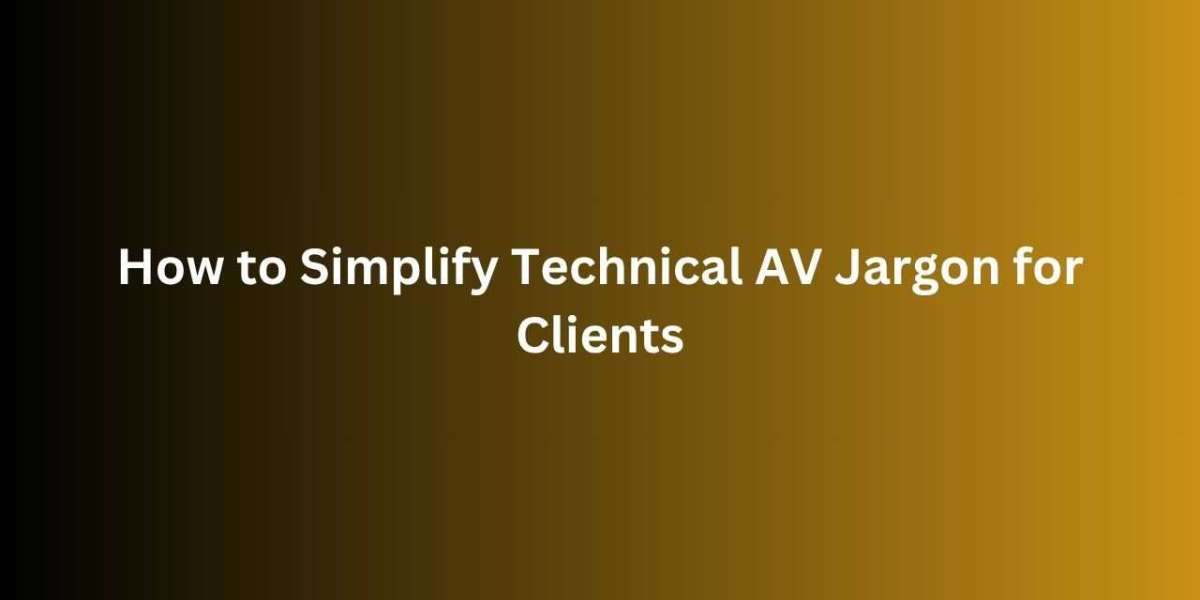At XTEN-AV, we believe that the best AV solutions are not only technically sound but also clearly understood by the clients they serve. For AV integrators, consultants, and sales professionals, technical mastery is just one part of the equation. Translating complex audio visual systems into plain language is essential to ensure clients are comfortable, confident, and committed to the project. From AV system installation to equipment specifications and integration strategies, every concept must be communicated with clarity.
This blog will guide AV professionals on how to simplify technical AV jargon and improve client communication, ensuring smoother collaboration and more successful project outcomes.
Why Simplifying AV Language Matters
Most clients are not AV experts. They may be school administrators, corporate facility managers, clergy members, or homeowners. They are more focused on how the technology will improve their space, not on every technical specification behind it. If your explanation is loaded with jargon like DSP chains, HDMI matrix switching, or latency benchmarks, you might lose them early in the conversation.
Simplifying the language is not about “dumbing it down.” It is about aligning the conversation with the client’s needs, concerns, and level of understanding.
1. Understand Your Audience First
Before you begin explaining AV components or processes, assess the client’s familiarity with technology. Are they new to AV systems, or do they have experience managing basic setups? This insight helps you tailor your language. For instance:
Beginner clients may need metaphors and real-world analogies.
Tech-savvy clients may appreciate simplified technical breakdowns without unnecessary fluff.
This client-first approach makes your communication relevant and respectful of their perspective.
2. Replace Jargon with Benefits
Technical terms like “PoE,” “Dante-enabled network,” or “video wall processor” can be intimidating. The easiest way to overcome this is by focusing on the benefits of these technologies rather than the components themselves.
Instead of “This system uses PoE,” say “All devices draw power from one cable, making the setup cleaner and more efficient.”
Instead of “We’ll install a Dante audio network,” say “You’ll be able to send high-quality sound across the building using your existing network wiring.”
Shifting the focus from how it works to why it’s good for them keeps the conversation engaging and valuable.
3. Use Real-Life Analogies
One of the most effective ways to make complex AV ideas relatable is through analogies your clients understand:
“A matrix switcher is like a traffic controller for video signals.”
“A DSP is like a mixing chef in your audio kitchen, making sure every sound ingredient is balanced.”
“This touchscreen is like a universal remote for the entire building.”
Analogies bridge the gap between technology and daily experience, turning confusion into comprehension.
4. Create Visual Aids
When in doubt, show it. Visual explanations like simplified V Wiring Diagrams, mock-up room layouts, or flowcharts can help clients see how the technology works. Tools from platforms like XTEN-AV allow you to generate visuals that explain signal flow, device connectivity, and control logic without overwhelming the client.
An AV system that looks daunting in text can become approachable in a well-labeled diagram or a simple room rendering.
5. Break Down the Installation Process
The installation phase often causes anxiety for clients who worry about timelines, downtime, or disruptions. Use simple language to describe the process step by step:
Site survey and planning – We’ll visit and measure your space.
Pre-wiring – We’ll run all the cables behind walls and ceilings.
Device installation – We’ll install speakers, displays, and controllers.
Testing – We make sure everything works properly.
Training – We teach you how to use the system.
Each step helps remove mystery and builds client confidence in your team.
6. Avoid Acronyms or Explain Them
AV is filled with acronyms: HDMI, AVB, IP, DSP, VGA, EDID, and more. While these may be second nature to integrators, they can be confusing for clients. If you must use an acronym, explain it briefly.
“This display connects via HDMI, which is the standard high-definition video connection.”
“We use IP cameras, which simply means they connect over the internet like your home security system.”
Even small clarifications like this can significantly improve understanding.
7. Keep Descriptions Short and Clear
Avoid long-winded explanations. Keep descriptions short, focused, and purposeful. For example:
Complicated: “This conference room system will utilize a 4K 60Hz HDMI 2.0 matrix switch routed through HDBaseT extenders and controlled via RS-232.”
Simplified: “You’ll be able to switch between any video source and display it in ultra-clear 4K quality using a simple control panel.”
Clear communication removes barriers and builds trust.
8. Offer Cheat Sheets and Glossaries
Clients often appreciate written materials that they can refer back to after your meeting. Create a one-page glossary or terminology sheet for their project. Include simple definitions of key terms and diagrams where possible.
Platforms like XTEN-AV help professionals generate customer-friendly documentation, simplifying technical information into clean, understandable formats that add value for the client.
9. Engage Clients in the Conversation
Encourage clients to ask questions and clarify anything they do not understand. Creating a comfortable environment where clients feel respected and heard ensures better engagement and reduces friction during the project.
A good way to do this is to periodically ask:
“Does that make sense?”
“Would you like a quick demo of how that works?”
“Is there a specific concern you’d like me to explain further?”
It shows empathy and professionalism.
10. Use XTEN-AV to Simplify Presentation
At XTEN-AV, our tools are built with the end-user in mind. We enable AV professionals to design systems with automated documentation, V Wiring Diagrams, and client-friendly proposals that eliminate technical complexity. Whether it is a smart classroom, a hybrid meeting space, or a home theater, our platform ensures your client understands what they are getting and how it works.
By helping you design and present your systems with clarity, XTEN-AV bridges the gap between your technical knowledge and the client’s expectations.
Final Thoughts
Simplifying AV jargon is not just a courtesy. It is a vital part of providing outstanding customer service and ensuring the success of your AV projects. Clients who understand their system are more likely to be satisfied, refer your services, and remain long-term partners.
By applying strategies like real-life analogies, benefit-focused descriptions, visual aids, and simplified documents through platforms like XTEN-AV, you empower clients to make informed decisions with confidence.
Read more: https://repurtech.com/how-cloud-based-av-systems-affect-installation-planning/







